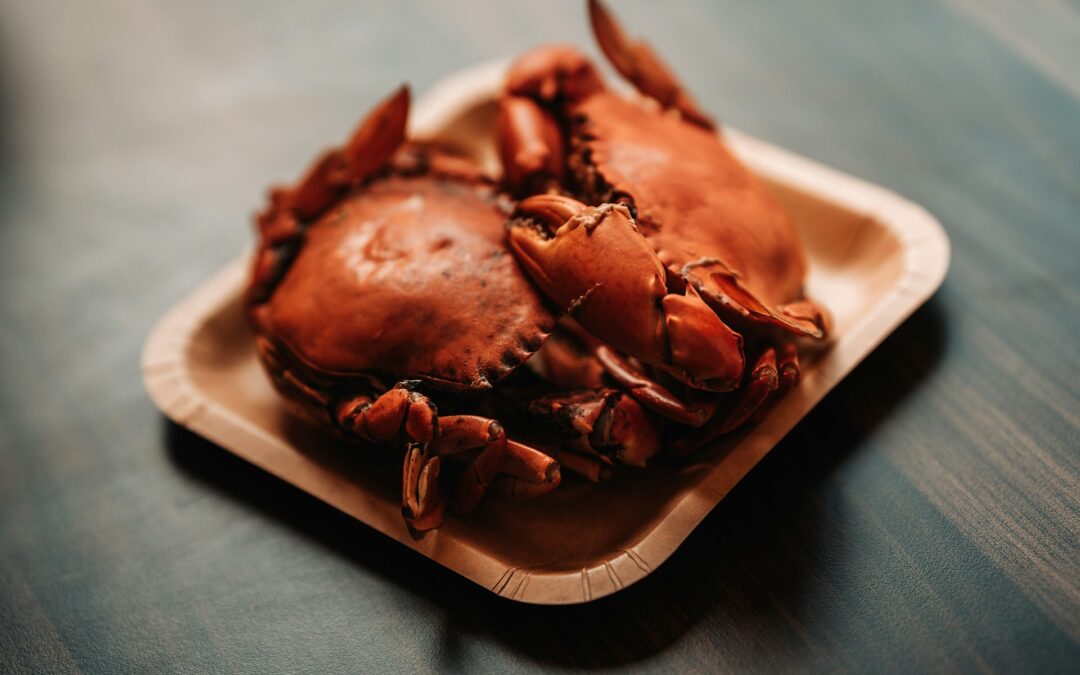Craving succulent, sweet crab legs but worried about food safety? Understanding how long cooked crab legs remain safe to eat after cooking is crucial for avoiding foodborne illness. This comprehensive guide delves into the intricacies of storing cooked crab legs, providing you with the knowledge to enjoy your delicious meal without compromise. We’ll explore the factors influencing shelf life, offer practical storage tips, and help you identify signs of spoilage. By the end, you’ll be a confident crab leg connoisseur, knowing exactly when those delectable crustaceans are still safe to savor.
The Crucial Role of Proper Storage
Proper refrigeration is paramount in extending the shelf life of your cooked crab legs. The temperature inside your refrigerator should ideally be at or below 40°F (4°C). Maintaining this temperature consistently prevents the growth of harmful bacteria that can cause food poisoning. Improper storage significantly reduces the safe eating window, so pay close attention to these details.
Airtight Containers: Your Best Friend
Once your crab legs are cooked, promptly cool them down. This rapid cooling process helps prevent bacterial growth. Then, transfer them to an airtight container. An airtight container minimizes exposure to air, which can lead to drying and spoilage. Avoid using loosely covered containers or plastic wrap, as these methods offer inadequate protection.
Shallow Containers for Even Cooling
Using a shallow container allows for faster and more even cooling. A thick layer of crab legs in a deep container may take longer to cool, increasing the risk of bacterial growth during the critical cooling phase. Think of it as maximizing surface area for efficient heat dissipation.
How Long Cooked Crab Legs Stay Fresh: The General Rule
Generally, cooked crab legs should be consumed within 3-5 days of cooking if stored correctly in the refrigerator. This timeframe provides a safe window for enjoyment. After 5 days, the risk of bacterial contamination increases considerably, making it unsafe to consume the crab legs. Always err on the side of caution when dealing with perishable seafood.
Factors Affecting the Shelf Life of Cooked Crab Legs
Several factors can influence how long your cooked crab legs remain safe to eat. These factors include the initial quality of the crab legs, the cooking method, and environmental conditions. Understanding these elements allows for a more accurate assessment of their remaining shelf life.
Initial Quality of Crab Legs
The freshness of the crab legs before cooking directly impacts their post-cooking shelf life. Crab legs that were already nearing the end of their freshness period before cooking will spoil faster than those purchased fresh. Always buy the freshest crab legs possible for the longest shelf life.
Cooking Method and Temperature
The cooking method used can subtly influence the shelf life. While not drastically different, properly cooked crab legs with consistent internal temperature are more likely to resist early spoilage. Thoroughly cooked crab legs are safer and will last a bit longer.
Environmental Conditions of Storage
Temperature fluctuations in your refrigerator can drastically impact the safety of your cooked crab legs. Ensure your refrigerator is consistently maintaining the recommended temperature of 40°F (4°C) or lower. A refrigerator that’s not functioning properly can dramatically reduce the safe storage period.
Recognizing Signs of Spoilage: When to Discard
Identifying signs of spoilage is crucial to prevent foodborne illness. Don’t rely solely on the number of days since cooking; examine your crab legs closely. Several visual and olfactory cues indicate spoilage, helping you make informed decisions.
Visual Cues: Color and Texture Changes
Spoiled crab legs may exhibit discoloration, often turning grayish or brownish. Their texture may also change, becoming slimy or mushy instead of firm and moist. These changes signal bacterial growth and indicate that the crab legs are no longer safe to eat.
Olfactory Cues: Unpleasant Odor
A strong, unpleasant fishy or sour odor is a definitive indicator of spoilage. Even a slightly off odor warrants discarding the crab legs. Your sense of smell is a reliable tool in assessing food safety; if it smells questionable, it’s best to err on the side of caution.
Freezing Cooked Crab Legs for Extended Storage
Freezing is an excellent method to extend the shelf life of cooked crab legs significantly. Properly frozen crab legs can last for 2-3 months, offering a longer window for enjoyment. Ensure that you freeze them in airtight containers or freezer bags, eliminating air exposure.
Thawing Frozen Crab Legs Safely
When ready to consume frozen crab legs, thaw them safely in the refrigerator. This slow thawing process helps maintain food safety and quality. Never thaw them at room temperature, as this allows for rapid bacterial growth. Once thawed, consume them within 1-2 days.
Conclusion: Safe and Delicious Crab Leg Enjoyment
Understanding the proper storage and handling of cooked crab legs ensures you can enjoy this delicious seafood safely. By adhering to the guidelines outlined in this guide, you can maximize their shelf life and minimize the risk of foodborne illness. Remember to prioritize proper refrigeration, recognize signs of spoilage, and choose the freshest crab legs available for the optimal culinary experience. Enjoy your delicious crab legs with confidence!

